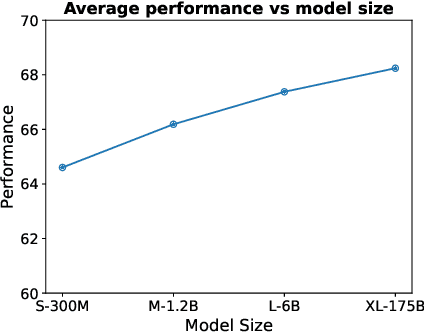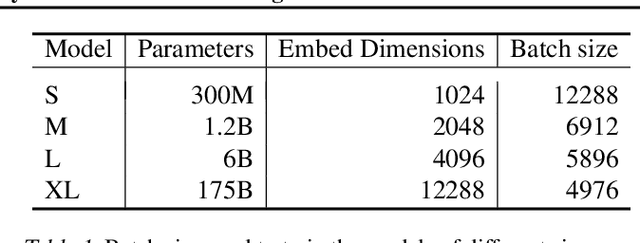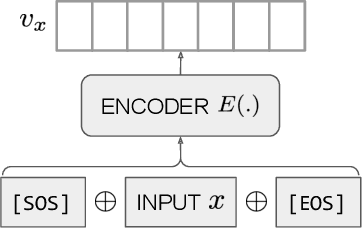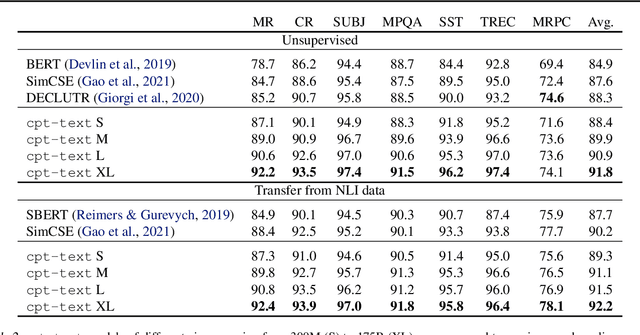Johannes Heidecke
Tony
PaperBench: Evaluating AI's Ability to Replicate AI Research
Apr 02, 2025Abstract:We introduce PaperBench, a benchmark evaluating the ability of AI agents to replicate state-of-the-art AI research. Agents must replicate 20 ICML 2024 Spotlight and Oral papers from scratch, including understanding paper contributions, developing a codebase, and successfully executing experiments. For objective evaluation, we develop rubrics that hierarchically decompose each replication task into smaller sub-tasks with clear grading criteria. In total, PaperBench contains 8,316 individually gradable tasks. Rubrics are co-developed with the author(s) of each ICML paper for accuracy and realism. To enable scalable evaluation, we also develop an LLM-based judge to automatically grade replication attempts against rubrics, and assess our judge's performance by creating a separate benchmark for judges. We evaluate several frontier models on PaperBench, finding that the best-performing tested agent, Claude 3.5 Sonnet (New) with open-source scaffolding, achieves an average replication score of 21.0\%. Finally, we recruit top ML PhDs to attempt a subset of PaperBench, finding that models do not yet outperform the human baseline. We \href{https://github.com/openai/preparedness}{open-source our code} to facilitate future research in understanding the AI engineering capabilities of AI agents.
SWE-Lancer: Can Frontier LLMs Earn $1 Million from Real-World Freelance Software Engineering?
Feb 19, 2025Abstract:We introduce SWE-Lancer, a benchmark of over 1,400 freelance software engineering tasks from Upwork, valued at \$1 million USD total in real-world payouts. SWE-Lancer encompasses both independent engineering tasks--ranging from \$50 bug fixes to \$32,000 feature implementations--and managerial tasks, where models choose between technical implementation proposals. Independent tasks are graded with end-to-end tests triple-verified by experienced software engineers, while managerial decisions are assessed against the choices of the original hired engineering managers. We evaluate model performance and find that frontier models are still unable to solve the majority of tasks. To facilitate future research, we open-source a unified Docker image and a public evaluation split, SWE-Lancer Diamond (https://github.com/openai/SWELancer-Benchmark). By mapping model performance to monetary value, we hope SWE-Lancer enables greater research into the economic impact of AI model development.
Trading Inference-Time Compute for Adversarial Robustness
Jan 31, 2025



Abstract:We conduct experiments on the impact of increasing inference-time compute in reasoning models (specifically OpenAI o1-preview and o1-mini) on their robustness to adversarial attacks. We find that across a variety of attacks, increased inference-time compute leads to improved robustness. In many cases (with important exceptions), the fraction of model samples where the attack succeeds tends to zero as the amount of test-time compute grows. We perform no adversarial training for the tasks we study, and we increase inference-time compute by simply allowing the models to spend more compute on reasoning, independently of the form of attack. Our results suggest that inference-time compute has the potential to improve adversarial robustness for Large Language Models. We also explore new attacks directed at reasoning models, as well as settings where inference-time compute does not improve reliability, and speculate on the reasons for these as well as ways to address them.
Diverse and Effective Red Teaming with Auto-generated Rewards and Multi-step Reinforcement Learning
Dec 24, 2024



Abstract:Automated red teaming can discover rare model failures and generate challenging examples that can be used for training or evaluation. However, a core challenge in automated red teaming is ensuring that the attacks are both diverse and effective. Prior methods typically succeed in optimizing either for diversity or for effectiveness, but rarely both. In this paper, we provide methods that enable automated red teaming to generate a large number of diverse and successful attacks. Our approach decomposes the task into two steps: (1) automated methods for generating diverse attack goals and (2) generating effective attacks for those goals. While we provide multiple straightforward methods for generating diverse goals, our key contributions are to train an RL attacker that both follows those goals and generates diverse attacks for those goals. First, we demonstrate that it is easy to use a large language model (LLM) to generate diverse attacker goals with per-goal prompts and rewards, including rule-based rewards (RBRs) to grade whether the attacks are successful for the particular goal. Second, we demonstrate how training the attacker model with multi-step RL, where the model is rewarded for generating attacks that are different from past attempts further increases diversity while remaining effective. We use our approach to generate both prompt injection attacks and prompts that elicit unsafe responses. In both cases, we find that our approach is able to generate highly-effective and considerably more diverse attacks than past general red-teaming approaches.
OpenAI o1 System Card
Dec 21, 2024



Abstract:The o1 model series is trained with large-scale reinforcement learning to reason using chain of thought. These advanced reasoning capabilities provide new avenues for improving the safety and robustness of our models. In particular, our models can reason about our safety policies in context when responding to potentially unsafe prompts, through deliberative alignment. This leads to state-of-the-art performance on certain benchmarks for risks such as generating illicit advice, choosing stereotyped responses, and succumbing to known jailbreaks. Training models to incorporate a chain of thought before answering has the potential to unlock substantial benefits, while also increasing potential risks that stem from heightened intelligence. Our results underscore the need for building robust alignment methods, extensively stress-testing their efficacy, and maintaining meticulous risk management protocols. This report outlines the safety work carried out for the OpenAI o1 and OpenAI o1-mini models, including safety evaluations, external red teaming, and Preparedness Framework evaluations.
Deliberative Alignment: Reasoning Enables Safer Language Models
Dec 20, 2024Abstract:As large-scale language models increasingly impact safety-critical domains, ensuring their reliable adherence to well-defined principles remains a fundamental challenge. We introduce Deliberative Alignment, a new paradigm that directly teaches the model safety specifications and trains it to explicitly recall and accurately reason over the specifications before answering. We used this approach to align OpenAI's o-series models, and achieved highly precise adherence to OpenAI's safety policies, without requiring human-written chain-of-thoughts or answers. Deliberative Alignment pushes the Pareto frontier by simultaneously increasing robustness to jailbreaks while decreasing overrefusal rates, and also improves out-of-distribution generalization. We demonstrate that reasoning over explicitly specified policies enables more scalable, trustworthy, and interpretable alignment.
Rule Based Rewards for Language Model Safety
Nov 02, 2024Abstract:Reinforcement learning based fine-tuning of large language models (LLMs) on human preferences has been shown to enhance both their capabilities and safety behavior. However, in cases related to safety, without precise instructions to human annotators, the data collected may cause the model to become overly cautious, or to respond in an undesirable style, such as being judgmental. Additionally, as model capabilities and usage patterns evolve, there may be a costly need to add or relabel data to modify safety behavior. We propose a novel preference modeling approach that utilizes AI feedback and only requires a small amount of human data. Our method, Rule Based Rewards (RBR), uses a collection of rules for desired or undesired behaviors (e.g. refusals should not be judgmental) along with a LLM grader. In contrast to prior methods using AI feedback, our method uses fine-grained, composable, LLM-graded few-shot prompts as reward directly in RL training, resulting in greater control, accuracy and ease of updating. We show that RBRs are an effective training method, achieving an F1 score of 97.1, compared to a human-feedback baseline of 91.7, resulting in much higher safety-behavior accuracy through better balancing usefulness and safety.
GPT-4o System Card
Oct 25, 2024Abstract:GPT-4o is an autoregressive omni model that accepts as input any combination of text, audio, image, and video, and generates any combination of text, audio, and image outputs. It's trained end-to-end across text, vision, and audio, meaning all inputs and outputs are processed by the same neural network. GPT-4o can respond to audio inputs in as little as 232 milliseconds, with an average of 320 milliseconds, which is similar to human response time in conversation. It matches GPT-4 Turbo performance on text in English and code, with significant improvement on text in non-English languages, while also being much faster and 50\% cheaper in the API. GPT-4o is especially better at vision and audio understanding compared to existing models. In line with our commitment to building AI safely and consistent with our voluntary commitments to the White House, we are sharing the GPT-4o System Card, which includes our Preparedness Framework evaluations. In this System Card, we provide a detailed look at GPT-4o's capabilities, limitations, and safety evaluations across multiple categories, focusing on speech-to-speech while also evaluating text and image capabilities, and measures we've implemented to ensure the model is safe and aligned. We also include third-party assessments on dangerous capabilities, as well as discussion of potential societal impacts of GPT-4o's text and vision capabilities.
The Instruction Hierarchy: Training LLMs to Prioritize Privileged Instructions
Apr 19, 2024



Abstract:Today's LLMs are susceptible to prompt injections, jailbreaks, and other attacks that allow adversaries to overwrite a model's original instructions with their own malicious prompts. In this work, we argue that one of the primary vulnerabilities underlying these attacks is that LLMs often consider system prompts (e.g., text from an application developer) to be the same priority as text from untrusted users and third parties. To address this, we propose an instruction hierarchy that explicitly defines how models should behave when instructions of different priorities conflict. We then propose a data generation method to demonstrate this hierarchical instruction following behavior, which teaches LLMs to selectively ignore lower-privileged instructions. We apply this method to GPT-3.5, showing that it drastically increases robustness -- even for attack types not seen during training -- while imposing minimal degradations on standard capabilities.
Text and Code Embeddings by Contrastive Pre-Training
Jan 24, 2022



Abstract:Text embeddings are useful features in many applications such as semantic search and computing text similarity. Previous work typically trains models customized for different use cases, varying in dataset choice, training objective and model architecture. In this work, we show that contrastive pre-training on unsupervised data at scale leads to high quality vector representations of text and code. The same unsupervised text embeddings that achieve new state-of-the-art results in linear-probe classification also display impressive semantic search capabilities and sometimes even perform competitively with fine-tuned models. On linear-probe classification accuracy averaging over 7 tasks, our best unsupervised model achieves a relative improvement of 4% and 1.8% over previous best unsupervised and supervised text embedding models respectively. The same text embeddings when evaluated on large-scale semantic search attains a relative improvement of 23.4%, 14.7%, and 10.6% over previous best unsupervised methods on MSMARCO, Natural Questions and TriviaQA benchmarks, respectively. Similarly to text embeddings, we train code embedding models on (text, code) pairs, obtaining a 20.8% relative improvement over prior best work on code search.
 Add to Chrome
Add to Chrome Add to Firefox
Add to Firefox Add to Edge
Add to Edge